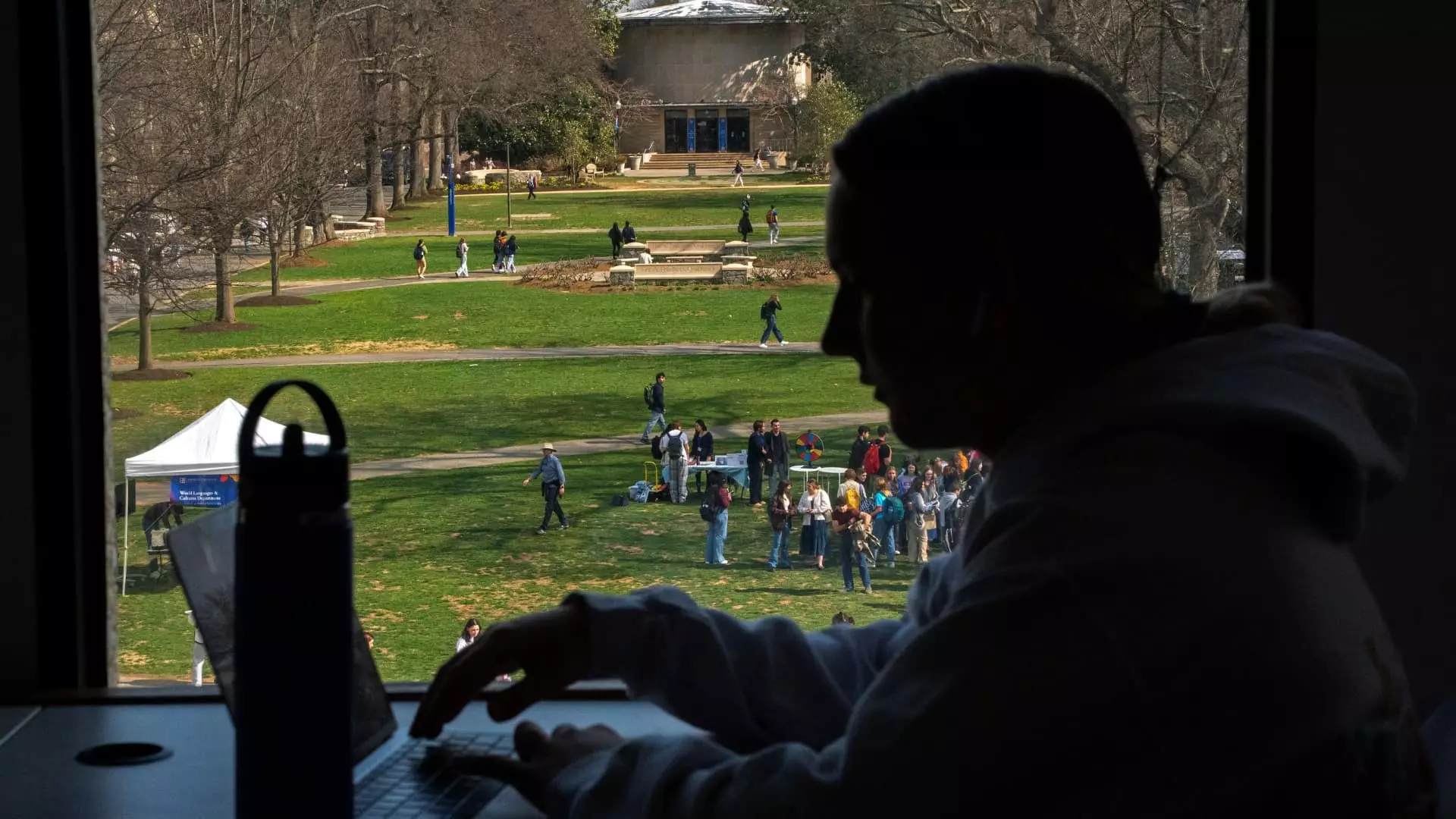For over 9 million student loan borrowers, an impending crisis looms on the horizon that could irrevocably damage their financial well-being. According to a recent report from the Federal Reserve Bank of New York, these borrowers may experience substantial declines in their credit scores—some as severe as a staggering 171 points. This revelation brings to light the repugnant disarray in student loan management and the detrimental effects that can spiral from it.
The impact on credit scores isn’t just concerning—it’s catastrophic for the individuals involved. Credit scores are pivotal in determining the financial opportunities available to borrowers. With a scale running from 300 to 850, any score below the benchmark of 670 is deemed subpar. For those already struggling, the prospect of deepening their financial burdens stirs a sense of dread. The harsh reality is that many individuals tethered to these loans are unequipped to cope with the fallout, relying on increasingly strained financial ecosystems.
Consequences Beyond Numbers: The Ripple Effect of Missed Payments
The ramifications of missed payments extend far beyond the abstract numbers on a credit report. They can effectively exclude borrowers from the realm of affordable financing, forcing them into a cycle of escalating fees and debt. This cycle hinders opportunities for recovery, thereby entrapping individuals in a relentless struggle for financial stability. It highlights a glaring discrepancy within our financial system—a system that has continually failed to provide a safety net, particularly for those who are most vulnerable.
To compound worries, the relief period instituted during the pandemic, which had temporarily eased collection activities and allowed students to breathe without the burden of payments, is over. The expiration of this reprieve as of September 30, 2024, signals the restart of aggressive collection tactics, including wage garnishments. Doug Boneparth, a financial planner, articulately underscores the alarming dimensions of this crisis: “This credit score penalty restricts their access to affordable financing,” he states. It’s a sentiment echoed throughout the financial community—one that emphasizes the moral obligation society has to safeguard those ensnared in this educational debt trap.
Potential Pathways: Navigating the Administratively Complex Terrain
Despite the grim outlook, there are potential pathways for borrowers facing this looming crisis. Many experts point out that options exist for individuals who proactively seek to protect their credit standings. Implementing an affordable repayment plan could significantly reduce the likelihood of falling behind. Income-driven repayment plans, for instance, offer much-needed relief by capping monthly payments based on discretionary income, allowing some borrowers to find themselves at a monthly payment of zero.
Recently, the Education Department reopened applications for these essential plans, offering a glimmer of hope. Yet still, many individuals remain unaware of such options or lack the resources to navigate the administrative labyrinth that the educational loan system creates. This apathy, combined with a general lack of awareness, exacerbates the risk of delinquency for countless borrowers.
Rehabilitation and Consolidation: Steps Towards Redemption
For individuals in default, avenues for potential rehabilitation loom, albeit often obscured by the daunting complexity of the system. Making a series of voluntary payments offers a route back to financial solvency, yet the requirement for multiple transactions over several months can feel insurmountably tedious. Conversely, consolidation may present a more manageable path, where individuals can essentially merge their debts into a newly structured loan.
Even the terminology—rehabilitation, consolidation—feels daunting to those grappling with the persistent burden of student debt. The road to recovery is paved with obstacles, and the lack of clarity surrounding these processes perpetuates the cycle of stress and confusion that weighs heavily on borrowers’ mental health. As if the financial implications weren’t enough, the psychological toll of grappling with constant uncertainty could hardly be underestimated.
In what can only be described as an abject failure of the educational financing system, the current situation demands urgent reform. It deserves a closer look not just from financial entities, but from policymakers who hold the power to enact tangible change. The looming threat of credit score declines cannot be dismissed as mere statistics; it reflects a broader crisis that dishearteningly encapsulates the struggle of many Americans in their pursuit of the ever-elusive dream of financial stability.

